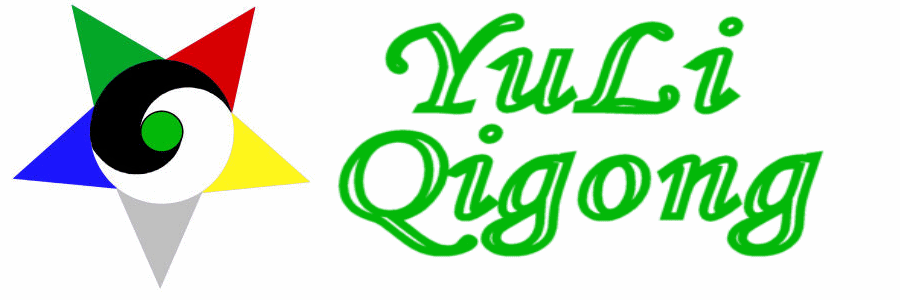Zhan zhuang 站樁
Also known as standing like a tree, post standing, tree hugging, standing stake etc.
The exercise of doing standing post is Zhan zhuang gong: 站樁功.
Performing these gongs or exercises promotes or creates the "Three Treasures" or San Bao: 三寳. The Three Treasures are known as Jing 精, Qi 氣 and Shen 神 and can be loosely translated as Essence, Vitality and Spirit.
According to Daoist doctrine the Three Treasures can be described as three types of energy available to humans. The Dao De Jing by Lao Zi states in chapter 42 that "The Dao 道 gives birth to the One, the One gives birth to the Two (Taiji 太極 or Yin and Yang 陰 陽) and the Two gives birth to the Three; (which some interpret to mean Jing 精, Qi 氣 and Shen 神, or sometimes Heaven: Tian 天, Earth: Di 地 and Man: Ren 人).
Basic Stances:
Natural Stance, also known as the normal stance. The feet are centered under the armpits, toes pointed forwards, knees are relaxed, arms are at the sides, thumbs towards the front.
Horse Stance (Ma bu), should be known as horse riding stance, since the legs are more than shoulder width apart, knees bent, feet forwards. Hands can be kept palms up on thighs, or in fists, at the hip, waist or at the lowest rib. Thumbs can be up or outwards.
Bow Stance (Gong Bu), forward leg bent, rear leg straight, rear foot is usually kept at a 45 degree angle. Hips are pointing forwards.
Cat Stance (Xu bu or Mao bu), forward leg bent, toes down and heel up, back leg less bent, foot flat on the ground. Toes are pointing 45 degrees from front.
Crane Stance (Guan bu), Various one legged stances. The raised foot can be just off the ground like a higher cat stance, or the foot can be placed on the calf, knee 45 degrees or 90 degrees to the side. In addition there are variations where the raised foot is at the height of the knee, either knee forwards or the leg twisted so the sole of the raised foot is on the other knee.
Back Stance (San qi bu), The reverse of the bow stance.
Bear Stance (Hung bu), Feet are more than shoulder width apart, toes are pointed inwards or heels are out, 15 to 30 degrees from forwards. Knees are bent, and the hand are either held at sternum level, out from the body in a bear claw (palms flat and fingers bent) palms facing, or one hand is at this level and the other on the back, palm out over the kidney.
Low Stance (Pu bu), body rests on rear bent leg, forward leg out straight. A very low back stance.
Note: “Bu” can also be translated as step. I would prefer to use the term zhitai, which means stance or form, since there are so many variations.
From stillness comes movement. All of the basic still stances lead to various moving forms. If the forms are done using Silk Reeling skill: chánsīgōng, 纏絲功, one then creates "Winding Silk Power" (or Silk Reeling Power): chánsījing, 纏絲勁. It is this silk reeling power (jing) that creates peng jing 掤勁 (ward off power). It is the combination of both that is the power behind the internal martial arts and Qigong. Without these two primary jings, Taijiquan is just slow dancing and Qigong is just slow breathing.
Using the technique "Yin-Ru-Yang-Chu" (陰入陽出): "moving-in when breathing-in" and "moving-out when breathing-out", Qigong practice channels Qi through the body with movements that are synchronized with breathing. Moving in or closing and moving out or opening refer to parts of the body. However, with the principle of Yin Yang, when one part of the body is closing, another is opening. As an example: You are inhaling and your arms are spreading from directly in front of you, to out to the side. This is opening of the chest; however, it is also closing of the back. Reverse the movement of your arms and exhale; you are closing the chest and opening the back.
My masters have stated that if you are going to practice Qigong for an hour a day, then 33% should be Zhan zhuang, and if you can only do 20 minutes, 45% should be Zhan zhuang.
